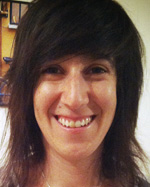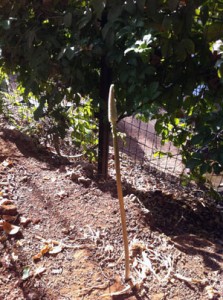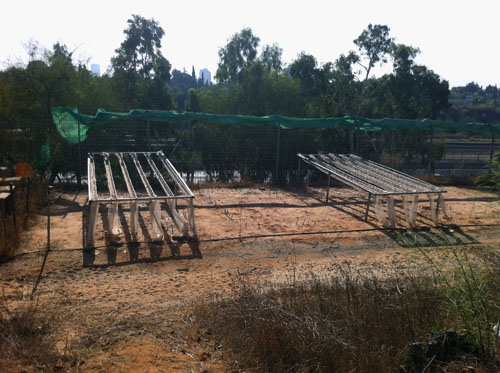By Candice Mervis

TEL AVIV — Professor Daniel Chamovitz is the director of the Manna Centre for Plant Biosciences at Tel Aviv University and author of What a Plant Knows, a detailed look into how plants sense and deal with their environments.
Chamovitz grew up in Aliquippa, Pennsylvania, a small mill town. He was the only Jewish boy in the entire school district and following in the footsteps of his family he was on track to study medicine. However he would later deviate from this course after spending a year driving a tractor in the alfalfa fields of Kibbutz Ketura located in the Negev north of Eilat. The experience provided Chamovitz with time to ponder the reason why alfalfa, unlike wheat grows back after it is harvested.
This question prompted Chamovitz’s move from pre-med studies to plant biology. After two years at Columbia University, he transferred to the Hebrew University of Jerusalem where he completed his undergraduate studies. He went on to complete his Ph.D research in plant genetics at the Hebrew University under the tutelage of Joseph Hirschburg. During this time he discovered the genes for beta carotene biosynthesis, a phenomenal discovery that later led to the Company Goldern Rice using this gene to enrich their rice with Vitamin A for third-world countries. Upon completing his Ph.D, Chamovtiz attended Yale University in the United States where he conducted his post-doctoral research.
What a Plant Knows evolved from Chamovitz’s post-doctoral research dealing with how plants use light as a developmental signal, or more simply a “switch” (rather than just a process of photosynthesis). During this research he isolated and identified the genes known as COP9 which are responsible for this signal. The research was initially plant-specific, until, at the end of his fellowship Professor Chamovitz discovered that humans have these exact same genes. This “Eureka” moment, as Chamovitz described it, revealed how “plants and animals while from seemingly completely different worlds have more in common than we think.” It led to further examination and understanding of the sensory systems utilized by plants to adapt to their enviornments.
After completing his fellowship Chamovitz came to Tel Aviv University and continued his research. He started a lab which examined the COP9 genes in both plants and animals, using fruit flies as a model system for animals. It was documented that mutations in these genes among fruit flies led to the development of cancer whilst in the same genes for plants, it led to the plant losing its ability to differentiate between light and dark. The discovery of cancer in fruit flies when mutating the COP9 genes led to Chamovitz completing a sabbatical at the Fred Hutchinson Cancer Research Centre as a guest scientist in 2002.
Recently Chamovitz took me on a guided tour of the Botanical Gardens at Tel Aviv University to discuss his the book and his research. His genuine, down-to-earth personality just radiated and the energy and enthusiasm for plant biosciences was simply infections.
The professor reaffirmed that plants and animals are very similar on a cellular level, however they have a completely different body plan. Plants, unlike animals have an evolutionary constraint; they are rooted and unable to move. This is a major difference. However it is the plants use of senses that allows it to adapt to and defend itself from its environment.

Chamovitz pointed out the chatzav, an Israeli plant (known in English as the Maritime Squill), which blooms the second week in August every year. The plant, using one photo-receptor, measures light in order to determine the length of the day. The shortening of the day is the plant’s signal to flower.
Thus, plants have a sense of vision, and they grow towards the light . Furthermore, he explained, plants do not see in pictures, their sense of vision enables them to differentiate among UV, blue and lights, which for them translates to food.
Chamovitz introduced me to his favorite plant, Mimosa (Mimosa Pudica), a beautiful tropical plant with delicate leaves and a small purple flower head which is generally found in Central/South America. What is so special about this plant is that when you touch the leaves they fold closed. When the plants is touched, it generates an electrical signal, much like a nerve, and in turn causes the leaf to fold. This demonstrates a plant’s sense of touch.
I never would have fathomed that plants have a sense of smell. Chamovitz ripped the leaf of a plant, to imitate an insect eating it. “The ripped leaf produces a pheromone that is released into the air and the surrounding leaves pick up this scent and start to produce a chemical that bugs do not like.” In essence the leaves communicate through these pheromones.
Much to my dismay, the mist in greenhouse that was home to the Venus fly trap was too heavy and I was unable to experience first-hand a plant’s sense of memory. Nevertheless Chamovitz provided an eloquent demonstration (with his hands) as to how a Venus Fly Trap knows when an insect is in the middle of trap, “It knows because it remembers.” He explained that when an insect touches the first hair the trap won’t close, however upon touching a second hair deeper inside the trap, it triggers the mechanism to shut. Quintessentially the plant has a memory that the first hair was touched. However if the second hair is not touched within 20 seconds of triggering the first one, the memory is lost . Chamovitz described this as a short-term immune memory, with no emotion.
It was riveting to see how plants feel and how they use senses of smell and sight, senses which have been thought exclusive to animals until now. However this raises a pertinent question, what then defines us as human beings? Simple, we care, we have emotions and plants don’t.
The book is an opportunity for Chamovitz to communicate to the world the importance of plants in human life. “We wear plants, we breathe plants, we are surrounded by plants, transportation burns plants. Humans wouldn’t survive without plants, however plants will survive without humans and we need to learn how to grow them with less land, water and fertilizer in a hotter environment.”

Chamovitz is currently leading a new multi-disciplinary initiative of Tel Aviv University in practical plant science, which looks at food availabiltiy and security, a subject heavily influenced by politics and policy. Chamovitz and the Manna Centre are collaborating with researchers from the disciplines of plant bioscience, law, politics and economics in order to provide long-term answers to issues of global food security. The initiative is concerned with ensuring a global supply of food sources and securing a supply of clean water. A current experiment conducted by the initiative regulates the amount of water to wheat that is grown in a hot and arid environment. This experiment seeks to understand the effects of global warming and how plants can survive with less water and in crowded conditions, while also understanding the economics of implementation.
The professor says there are two things he cannot live without, one is his guitar and the other is skiing with his wife and three children. When he studied at the Hebrew University he used to work as a ski lift operator at Mount Hermon. As for the guitar, he loves to play “Blues” and once or twice a year will do an impromptu performance at a local bar.
Chamovitz will be visiting Battleboro and Harvard to speak about his book, What a Plant Knows as well as attending the Asia Pacific Economic Conference (APEC) to speak on global food security, essentially to awaken the world to the importance of plants and our understanding of their complexities. Without plants where would we be?
*
Mervis is a freelance writer based in Tel Aviv. She may be contacted at candice.mervis@sdjewishworld.com